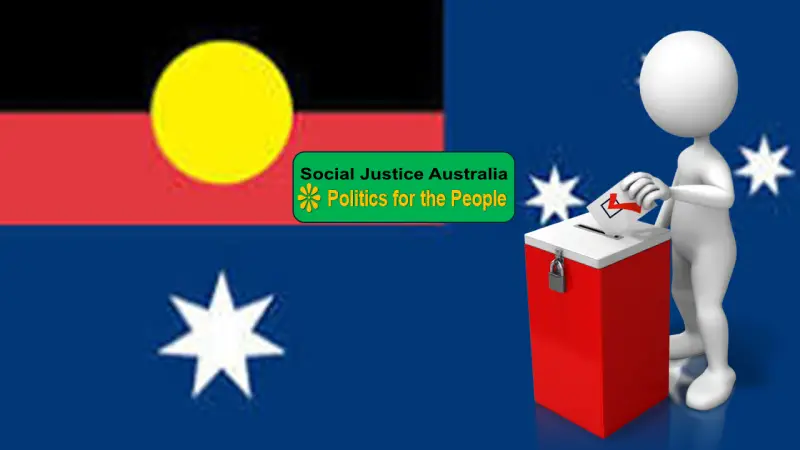Description
Learn how to use preferential voting wisely and scrutinise candidates for Australia’s 2025 Federal Election.
Introduction: Why Your Vote Matters More Than Ever

Voter turnout and engagement are crucial for a healthy democracy. However, many Australians feel disillusioned, believing their vote holds little weight in shaping the country’s future. This couldn’t be further from the truth. The preferential voting system, unique to Australia, places tremendous power in the hands of voters—if used strategically.
By understanding how preferential voting works, scrutinising candidates thoroughly, and preparing before stepping into the polling booth, you can help ensure your vote makes a real difference in the 2025 federal election.
How Preferential Voting Works
Australia’s preferential voting system enables voters to rank candidates in order of preference. This approach ensures that if your first-choice candidate doesn’t win, your vote can still help elect another candidate you prefer over the remaining options. Unlike systems that rely solely on the majority of first-preference votes, preferential voting ensures a broader representation of voter intentions.
By ranking multiple candidates, you can effectively say, “I want candidate A, but if not A, then B, and if not B, then C.” This empowers you, not political parties, to shape outcomes more closely aligned with your values.
Who Allocates Preferences?
A common misconception is that political parties decide how your preferences flow. This is false. You, the voter, control the allocation of your preferences. Parties may distribute “How to Vote” cards suggesting a specific order, but these are merely recommendations. You are free to ignore them and make your own decisions. In fact, it’s often in your best interest to do so.
Political parties design their preference recommendations to help their strategy—not necessarily what’s best for you. By thinking critically and choosing your own preference order, you take full control of the voting process.
How to Scrutinise Candidates
Making an informed vote requires understanding who you’re voting for. Here are practical steps to assess candidates in your electorate:
1. Check Voting Histories:
Use resources like They Vote For You to see how candidates have voted on key issues. This helps you understand their track record and priorities.
2. Review Social Media and Official Websites:
Follow candidates’ social media accounts and official websites. These platforms reveal their policy positions, community involvement, and how they respond to questions.
3. Look Beyond Party Lines:
Don’t rely solely on party affiliation. Individual candidates’ stances can vary significantly within the same party. Research what each person truly stands for.
4. Engage with Campaign Events and Q&A Sessions:
Attend public forums, watch interviews, and ask direct questions. Observing how candidates handle these situations can provide valuable insights into their competence and authenticity.
Ignore “How to Vote” Cards
Political parties often hand out “How to Vote” cards at polling booths, trying to guide your preference flow. While these cards may seem helpful, they’re crafted to serve party interests, not necessarily yours. Relying on these cards can undermine your ability to vote in alignment with your values.
Instead, come prepared with your own preference order based on thorough research. Remember, the power of preferential voting lies in your informed choice, not the suggestions of parties.
The Power of Marginal Electorates
Marginal electorates, where the margin of victory is slim, hold immense sway in deciding election outcomes. If you live in one of these key areas, your vote has even greater influence. A few hundred votes in a marginal seat can decide which party forms government. By voting wisely—ranking all candidates in order of genuine preference—you amplify your voice and increase the impact of your vote. In past elections, strategic voting in marginal seats has shifted national policies and leadership.
Preparing to Vote Wisely
Before heading to the polling booth, take time to prepare. Here’s an easy guide to ensure your vote counts:
1. Understand the Ballot Paper:
Familiarise yourself with the layout and rules. Knowing how to complete your ballot correctly reduces errors.
2. Research Candidates Thoroughly:
Gather information on each candidate’s platform, voting history, and public statements.
3. Decide Your Preferences in Advance:
Rank your candidates in order of preference at home. Bring a list with you, so you don’t feel pressured or rushed on polling day.
4. Stay Informed on Election Rules:
Check official election materials and resources for updates. This ensures you understand any recent changes to the process.
5. Vote Strategically: Unlocking the Power of Preferences
Australia’s preferential voting system is a cornerstone of its democratic process, offering voters a unique opportunity to shape the political landscape. Yet, many Australians underestimate its transformative potential. By understanding how preferences work and using them strategically, citizens can move beyond the traditional ALP-LNP dominance. This approach empowers voters to choose candidates who best reflect their values, helping to build a more inclusive and representative democracy.
Encouraging Community Involvement
Engaging with your community strengthens democracy. Discuss voting strategies with family, friends, and local groups. Share the resources you’ve found useful and encourage others to research their candidates. By fostering a culture of informed voting, you help ensure that more voices are heard. Grassroots discussions can lead to a more engaged electorate and better representation for everyone.
Conclusion and Call to Action
Every vote matters. By understanding preferential voting, ignoring party “How to Vote” cards, scrutinising candidates, and preparing ahead of time, you can make a meaningful impact in the 2025 federal election. Your vote is not just a single tick on a ballot—it’s a statement of your values, priorities, and vision for Australia’s future.
Question for Readers
How do you plan to research and rank candidates in your electorate?
Call to Action
If you found this article insightful, explore more about political reform and Australia’s monetary sovereignty on Social Justice Australia: https://socialjusticeaustralia.com.au/
Share this article with your community to help drive the conversation toward a more just and equal society.
Click on our “Reader Feedback” menu. Let us know how our content has inspired you. Submit your testimonial and help shape the conversation today!
Additionally, leave a comment about this article below.
If you believe in social justice for all citizens and creating a more just society, consider supporting our work. Your donations help us continue producing in-depth, informative content and advocating for meaningful reforms. Every contribution, big or small, makes a difference.
Donate Here to help drive positive change.
Thank you for standing with us for a fairer, more equitable Australia.
Q&A Section:
Q: What is the difference between primary and secondary preferences?
A: Your primary preference is your first choice on the ballot. Secondary preferences are the candidates you rank next, in order of who you’d prefer if your first choice doesn’t win.
Q: Why should I ignore “How to Vote” cards?
A: “How to Vote” cards are party recommendations, not requirements. Ignoring them helps you stay true to your values rather than following a party’s strategy.
Q: How can I find a candidate’s voting record?
A: Websites like They Vote For You show detailed voting records, helping you understand where candidates stand on key issues.
References
How to Vote at a Polling Place: https://www.aec.gov.au/about_aec/Publications/easy-read/files/vote-polling-place-easy-eng.pdf
They Vote for You: https://theyvoteforyou.org.au/
How to Decide Your Preferences in Advance: Vote Easy: https://voteeasy.com.au/


Thank you, Denis. Knowing what your preferred candidate says in Parliament is more important than knowing what he or she says when campaigning.
Hanson is the consummate example: Say one thing, do another.
The major parties are not innocent, either. They know that some independents or minor parties can be ‘bought’. You scratch my back and I’ll scratch yours.
Thank you, Michael, for your insightful comment! You’re right—what politicians do in Parliament matters far more than their campaign promises.
Pauline Hanson indeed exemplifies this disconnect, consistently promising action for everyday Australians but voting alongside the Coalition almost every time, often against the interests of her own supporters. You’re also correct about the major parties—they exploit minor parties and independents through political horse-trading, undermining genuine representation.
This highlights why voters must closely examine parliamentary voting records and continually hold all politicians accountable, not just at election time. We can only achieve a political system where actions align authentically with promises.
“They vote for you”. The importance of this cannot be underestimated.
At our small local shopping centre – right out the front of Coles – couches were provided for weary shoppers and no matter what day, or what time of day, a bloke in a blue singlet (always a blue singlet) would sit in wait for an unwary shopper to flop into one of the couches so he could pounce on them with: “Gee, Donald Trump’s doing a good job” or his favourite: “I’m glad we have Pauline Hanson in parliament. She speaks for me. She knows how to stick it right up the government.”
One day, with my patience being stretched, I interrupted and asked: “So she speaks for you, hey. And she’s not bullied by the government, is that right?” He nodded furiously. “Well I hate to tell you this, while she’s speaking for you, do you want to know how often she votes with the government? 89% of the time. She ain’t speaking for you, buddy.”
A year or so later the pandemic hit us and the couches were removed. Removing them was a community service – it got rid of the annoying little redneck.
Thank you for sharing this story, Michael. It perfectly illustrates why knowing how your elected representatives actually vote is so important.
Many politicians talk tough or “say the right things,” but their voting record tells the real story. As you pointed out, despite Pauline Hanson’s anti-establishment image, she has voted with the government most of the time, often backing policies that hurt the people she claims to represent.
Websites like TheyVoteForYou.org.au are essential tools for exposing the spin. They allow voters to see who our MPs really serve—us or powerful donors and party machines.
It’s not about left or right — it’s about holding every politician accountable for their actions, not just their slogans.
👍 Thanks again for your story. More people need to hear this.